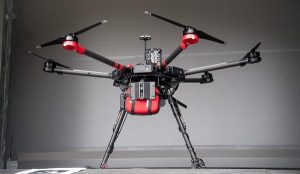Drone technology has the potential to top traditional ambulances in terms of heart attack response time, according to researchers in Sweden. After conducting what they say is the first international feasibility study of drone-based defibrillator deliveries, first responders determined that airborne delivery methods could save crucial minutes of emergency response time by bringing life-saving devices directly to the location of the patient.
Every 60 seconds without CPR or AED application after a heart attack compounds the body’s turmoil and complicates survival; the mortality rate for heart attacks that occur outside of hospitals is a stunning 90%.
This study, taking place near an airport in the second-largest city in Sweden, featured three drone stations. Each drone was fitted with automated flight programs, supervised by a trained drone pilot, and had a 5-kilometer flight radius. When arriving at its destination, a drone would hover at 100 feet and cast down an AED via winch.
Upon notification of a heart attack, dispatchers privy to the study sent ambulances and drones. In the period of June to September 2020, the drones beat the ambulances to the scene around two-thirds of the time and successfully delivered AEDs in 11 out of 12 cases.
Factors that limit the deployment of drones, such as inclement weather, restricted airspace, and battery life, are first up to be tackled in the research development pipelines of drone manufacturers and medtech engineers.























